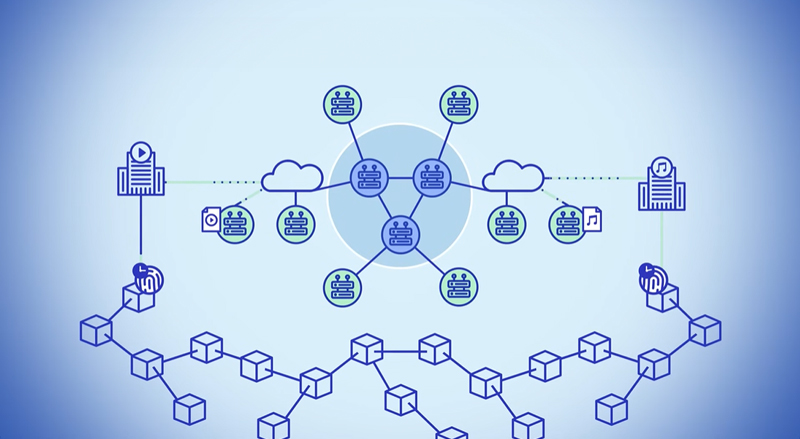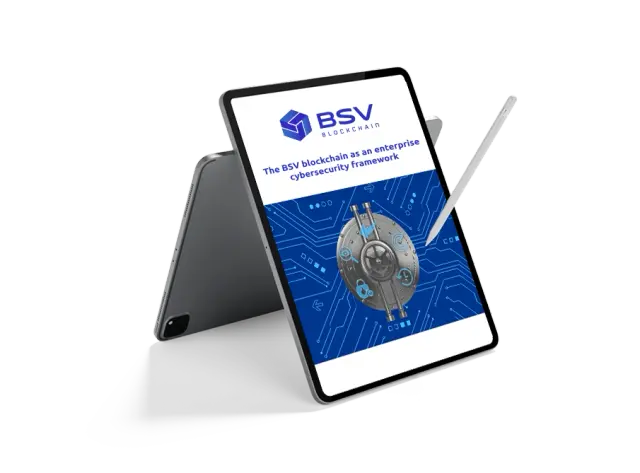The Workshop ‘Building Applications on BSV blockchain’ put into practice what the BSV blockchain speakers, Connor Murray, Founder of Britevue and BSV Academy Course Content Creator, Jad Wahab, Director of Engineering at Bitcoin Association, and Darren Kellenschwiler, Co-Founder & CTO of Elas and Developers Community Manager at Bitcoin Association referred to during their talks ‘20 Million Txs Per Day: Writing Data to the World’s Largest PoW Blockchain’ and ‘Bitcoin as Turing complete system for building smart contracts & tokens’.
When and why building on BSV makes sense
Connor Murray started the workshop by answering the question of why you would want to build an application on BSV. In order to answer it, Murray goes back to the white paper and the reason why Satoshi Nakamoto created Bitcoin. He conceived it as a digital cash system with micropayments being its original and primary use-case.
These micropayments unlock entirely new use-cases for all kinds of applications that can solve real-world problems. To showcase that this is not only theoretical talk, but can be put into practice in the here and now, he set up a QR-code allowing workshop participants to receive BSV by scanning the code.
Showcasing BSV’s scalability through existing apps
The application used was an app that was built with HandCash’s SDK called ‘Pay Pistol’. As it makes use of BSV’s near-instant transactions, it is nicknamed ‘the world’s fastest tipping app’.
Another app that was introduced was Jump available on Haste Arcade. Haste Arcade has developed a unique Play-and-Earn model through their Instant Leaderboard Payouts (ILP). Building on Haste Arcade is in general easy. You just develop an arcade game and connect it with Haste Arcade’s SDK.
Murray then touched on the question of why you would want to build on a blockchain. The developer and entrepreneur broke the utility of BSV in certain features.
- Micropayments
- Immutable timestamp server
- Digital cash
- Tokenisation and NFTs
Micropayments
BSV – as the white paper outlines – was conceived as a ‘Peer-to-peer Electronic Cash System’. The needs for a native value transfer of the Internet were apparent at the early stages of the internet and micropayments being a primary use-case for a digital cash system. In order to facilitate such micropayments, BSV has to be scalable. Transaction costs on BSV are reliably low and remain stable at a fraction of a cent. This way, BSV is a cash system suitable to transfer and store all kinds of data on-chain, which in itself provides further utility.
Publish data immutably to the blockchain with our free demo tool!
Immutable timestamp server
Keeping records is a key achievement of civilisation. However, before Bitcoin there was no solution for a global system of keeping records for the digital age. Instead, everything had to be kept in data silos, which poses problems in regard to interoperability and confirmability. On the blockchain, data is stored in an immutable way and time stamped through the mechanism of creating a new block at roughly every ten minutes.
Digital Cash
The peer-to-peer or end-to-end model is an important factor when it comes to cash. There is no middleman involved when it comes to transactions. Murray points out that this is not the case when we make transactions via credit cards or similar systems, as the financial service providers usually take a fee of around 3% or more. This also provides further advantages when it comes to data security and privacy.
Tokenisation and NFTs
Beyond the recent hype of digital arts NFTs, tokenisation offers a wide range of real world use-cases. The founder of Britevue points out how NFTs are useful in the context of our economy, finance and society. Murray used the example of the supply chain, where origin, handling and storage conditions are tracked via various IoT-devices. The end-consumer can make a very informed decision about his desired product and according to individual preferences, whereas supplier and merchant can reliably confirm the high value of their product.
Wrong assumptions about building blockchain applications
These are some major value propositions of a blockchain that is scalable for global adoption. It allows creating all kinds of different applications, services and solutions, which you can research on our website bsvblockchain.org. However, when developers choose to build blockchain applications, they might have certain prejudices and assume problems that are actually already solved by the BSV blockchain.
‘You have to build your own wallet’
Many developers abstain from building blockchain-based applications, as they assume they would have to develop their own wallets first. It is a difficult matter, as not everyone has experience in creating secure and functional wallets. The hazard of attack vectors could seem to be too big, given how much value can be transferred in certain applications.
The assumption is wrong, as there are many service and infrastructure providers out there, which Murray had already showcased at the beginning of the workshop. Namely, HandCash and Moneybutton are examples for infrastructure providers with their SDKs. In the context of gaming, Haste Arcade is another example.
Blockchains can’t scale
Bitcoin scales in theory unboundedly and is only capped by physical boundaries. The BSV blockchain can already handle Gigabyte-sized blocks and Satoshi Nakamoto said that Bitcoin could already scale past Visa’s transfer network (2009). With Terabyte-sized blocks that are currently in the making, BSV blockchain will scale much beyond currently perceived boundaries of scalability.
Bitcoin’s main purpose is to be decentralised
Many people in the so-called ‘cryptospace’ regard decentralisation as an end in itself. However, as the speakers pointed out during their talk ‘20 Million Txs Per Day: Writing Data to the World’s Largest PoW Blockchain’, decentralisation adds no further value or utility to Bitcoin beyond a certain point. On the contrary, it can impede these qualities. Murray and his colleagues illustrated this by pointing out how useless it would be to download all emails ever sent, just to send emails yourself, or to demand of AWS to be able to check your data transfers with them at all times.
Building applications on BSV
Darren Kellenschwiler took the floor for the practical part of the workshop. By introducing himself and his career as a developer, he illustrated how easy it is to get started as a blockchain developer on BSV. Four years ago he had worked in marketing as a cinematographer and transitioned within that time frame to become an experienced developer.
Money Button
At this stage it is particularly easy to build on BSV, because a lot of infrastructure already exists which developers can use to include, modify or connect their existing applications with BSV. Kellenschwiler’s first example for this was Money Button, which is a web wallet developed by Fabriik. The co-founder of Elas showcased the details of building your application with Money Button in terms of e.g. interoperability and what kind of data can be transacted.
HandCash Connect
The next example Kellenschwiler presented in more detail was HandCash and Paypistol, the tipping app that Connor Murray had introduced earlier. Paypistol was built on HandCash via HandCash’s developer dashboard. Using this dashboard, he took on the task of creating an app with which he could make a payment to his colleague, Jad Wahab. Along the way he showed the different directions that HandCash allows you to go with pre-built features you could need for your app:
- Public user profiles
- Private profiles
- Payments
- Encryptions
- Sign data
- Friends list
- Manage Jigs
Further help is offered through HandCash’s documentation docs.handcash.io or you could even book a call with HandCash’s staff to help you with more specific problems.
DAGDA – building on BSV blockchain without holding BSV
Both of the examples that Kellenschwiler showcased require you as a developer or service provider to hold BSV, which is not desirable for everyone and in all cases. For this particular problem, there is a tool called DAGDA, which is short for Directed Acyclic Graph Data API. Relying on this, you do not have to deal with BSV’s UTXO management and leave this job to a consumable service. It allows you to create permissioned ledgers on the BSV blockchain. Kellenschwiler showed how you could implement DAGDA in your app.
Replicating Baemail with HandCash
The last example of the workshop and its main part was Baemail. It is an application on Money Button that allows you as a paymail user to send encrypted messages to other paymail users. The developer now replicated this application using HandCash’s SDK. Kellenwschwiler succeeded in accomplishing this in about 45 minutes.
The workshop ended in a Q&A session that lasted for 30 minutes with much interest and commitment from the attendees. You can watch the presentation including the Q&A on YouTube.






